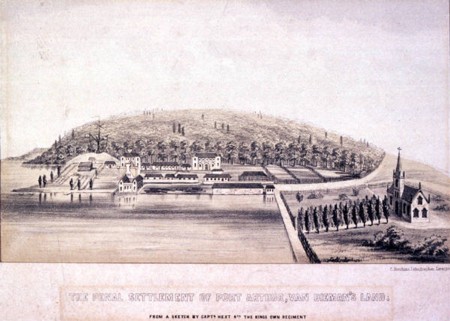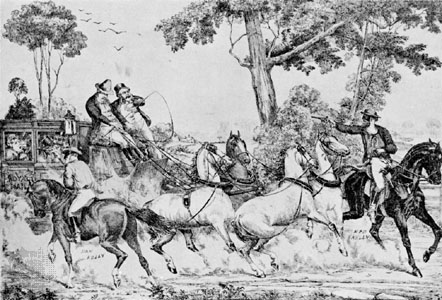Tasmania and the final solution down under…
…in the model prison, the latest techniques of criminal reform were practiced, notably the silence system- a system so absolute that the warders wore felt slippers and the prisoners wore masks in church to preserve their isolation from humankind, and worshiped in single, shuttered cubicles. All the buildings are gray, a gray suspense hanging over the scene like vapor,both hiding and accentuating the grim authority…

—The Australian convicts and settlers involved in the colonization of Tasmania were mostly convicts and their military guards and were set the difficult task of developing agriculture and other industries on this wild island. Numerous other Australian convicts settlements were made in Van Diemen’s Land, including secondary prisons, such as the particularly harsh penal colonies at Port Arthur in the southeast and Macquarie Harbour on the West Coast.—Read More:http://www.tasmaniatrip.com/history-of-tasmania.html
Port Arthur was starkly insulated from the rest of the island. Guard posts with dogs patrolled the narrow spit, Eaglehawk Neck, which was the only land approach to the peninsula, and an elaborate system of sentinels and semaphore towers made it exceedingly difficult for a convict to escape. Some did, nevertheless; many more went to Hobart as assigned servants or ticket-of-leave men. But the very presence of the settlement, with its thousands of helpless men numbed or animalized by despair, pervaded the whole of the island and made society everywhere else coarser by the experience of it.

—The first major outbreak occurred in Tasmania (then known as Van Diemen’s Land), during the last decade of the eighteenth century and the first half of the nineteenth century. The main participants in this banditry were escaped convicts from the penal settlements, joined by a few army deserters, sailors and criminals who had served their sentences and now sought an adventurous lifestyle. The first man to escape to the bush, in 1789, was John Caesar, a First Fleet negro convict nicknamed ‘Black Caesar’, who had been sentenced at Maidstone, Kent, in 1785, to seven years’ transportation to New South Wales. Many of the convicts transported to Australia had been found guilty of relatively minor offences but after escaping from the harsh, brutal prison settlements they drifted into a life of serious crime. Many therefore acquired further convictions. Once on the run they had to rob for sustenance and many seriously injured or killed their victims in the process. The worst offenders transported from Britain were sent to Tasmania to serve their sentence at Port Macquarie Harbour. Here, under terrible conditions, they worked like slaves felling tall trees in the rain forest and dragging the huge logs to the shore. The Macquarie Harbour prison settlement was abandoned in 1833 and a new, equally grim one opened at Port Arthur, on the south-eastern Tasmanian peninsula.—Read More:http://www.criminals.lt/page.php?al=australian_scene
Many of the settlers were themselves emancipated convicts- very few of those freed in the Australian settlements ever went back to Britain. Nearly all the others employed convict servants. When food ran short in the early years of the settlement, convicts were allowed to go into the bush to forage for themselves; some became bushrangers or bandits, founded a desperado tradition, and graduated often enough into the romantic heroes of island legend. Society was polarized between an authoritarian establishment on the one hand and a huge criminal population on the other, and at either extreme was instinct with violence. ( to be continued)…





 COMMENTS
COMMENTS